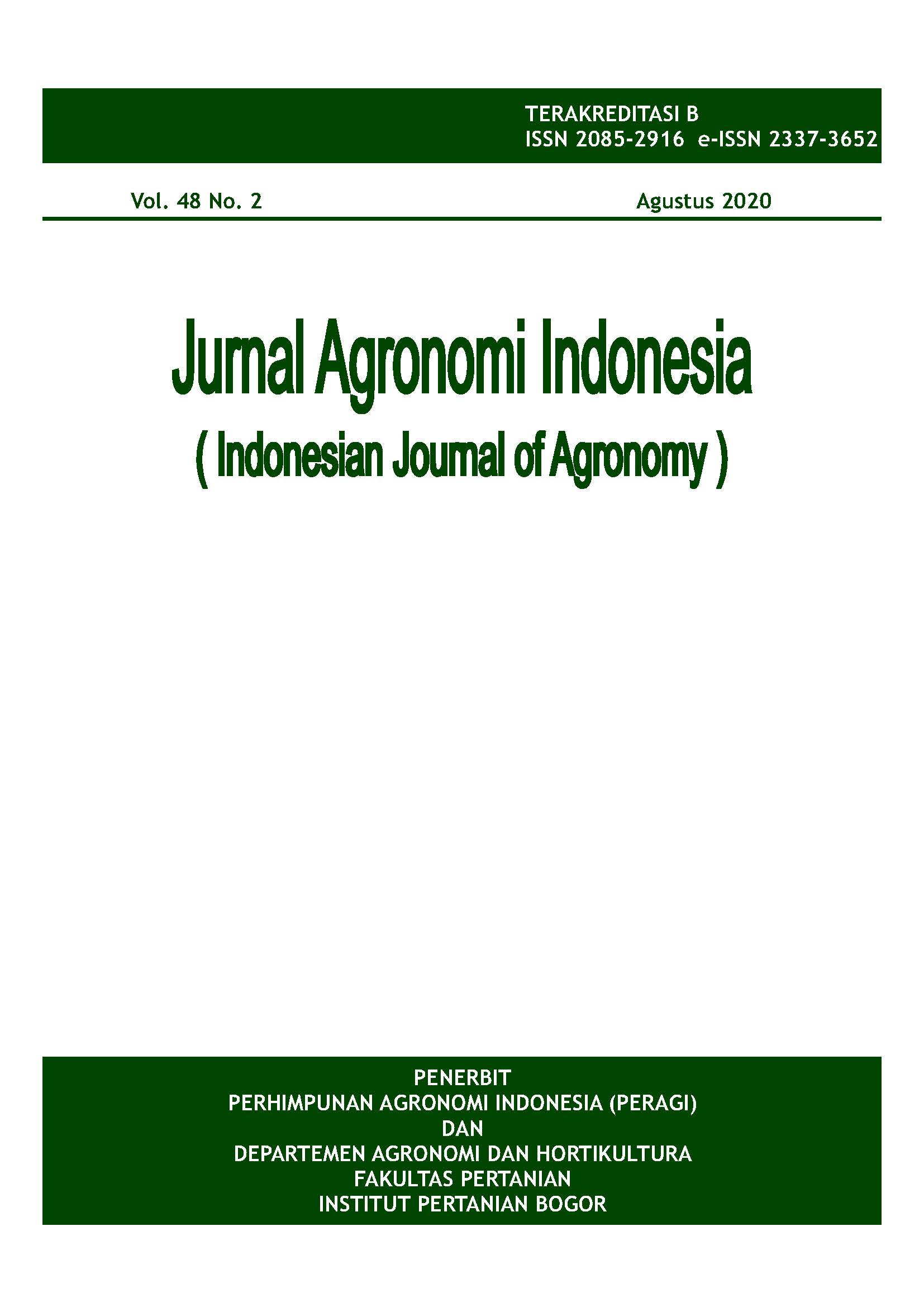Produksi Jintan Hitam (Nigella sativa L.) dengan Pemberian Asam Humat dan Waktu Panen Berbeda
Abstract
Black cumin (habatussauda) is a herb plant that is used all over the world for treatment or prevention of diseases. Seeds and seed oil of habatussauda have many advantages. The research aimed to determine yield component and active compound of habatussauda with treatments of humic acid and harvesting time. The research was conducted at the Pasir Sarongge Experimental Station, Cianjur, West Java, Indonesia, from May to December 2019. The experiment was arranged in a randomized completely block design with two factors. The levels of humic acid treatment were 0, 1.5, 3, and 4.5 ton ha-1, and harvesting time levels were 6, 7, 8, and 9 weeks after anthesis. The results showed that humic acid up to 3 ton ha-1 did not have significant effects on capsule and seed productivity, but humic acid 4.5 ton ha-1 decreased those. Humic acid and harvesting time did not have significant effects on thymoquinone content and production. Harvesting time at 6 until 7 weeks after anthesis was the best time for harvesting capsule and seed.
Keywords: capsule, habbatussauda, seed, thymoquinone













